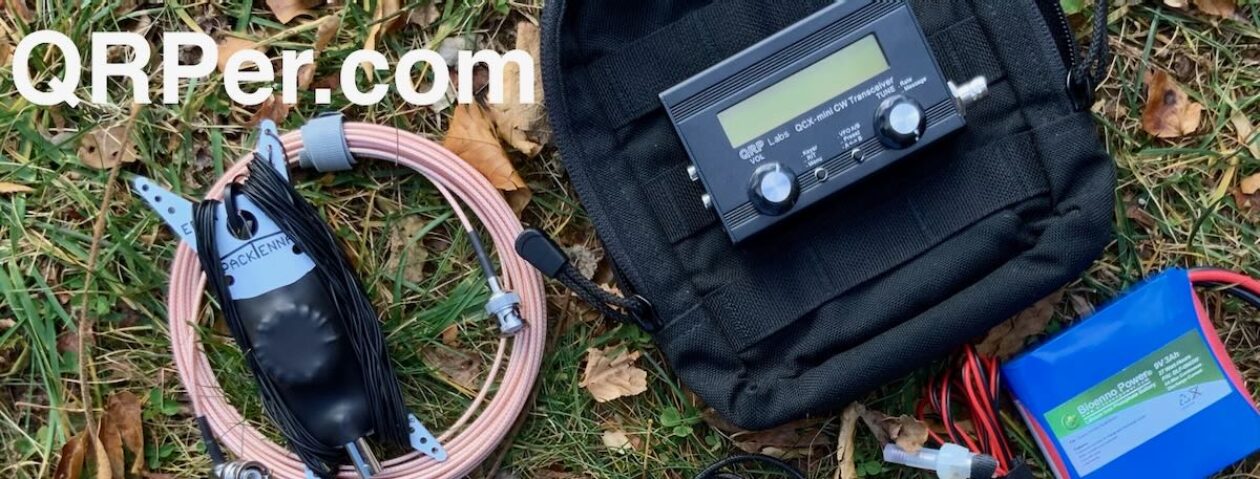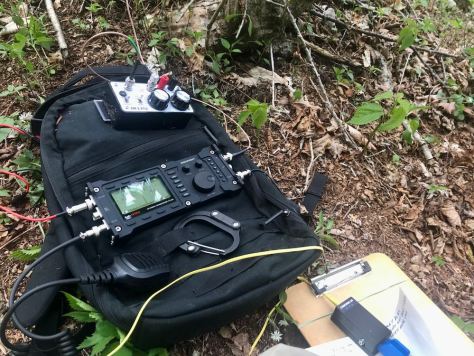As I’ve mentioned a number of times on QRPer and on the SWLing Post, I’m a pack geek. I enjoy organizing and packing my gear for field radio activities and travel.
Last week, I made a very quick overnight trip to visit my parents. My time during this trip was very limited and I did not plan to fit in an activation, but Monday morning, I was able to knock out an errand very early and that freed up a couple of hours in the early afternoon. Fortunately, prior to leaving my QTH, I decided to pack a few travel items in my GoRuck GR1 pack along with a field radio kit built around my Elecraft KX2.
I never leave home without a field radio kit because I never know when an opportunity to play radio might happen.
On the way home Tuesday, I popped Lake Jame State Park and fit in a quick, last minute activation. Moments before arriving at the lake, I received a request from one of my YouTube subscribers asking if I would make the occasional video showing what’s in my radio packs and field kits.
I’ve been meaning to make these videos but, frankly, often forget when I arrive at a park or summit because I’m just a little too focused on starting my activation.
Since I had some overnight items in my pack, it wasn’t a typical SOTA or POTA field kit, but I decided to make the video anyway. After all, I love watching videos about how others pack and organize their radio and travel kits. But then again, I’m a pack geek. I did mention this right–?
Although I’m not always the neatest person (my wife is probably chuckling at this gross understatement), I’m a meticulous and very organized pack geek. What you see in the video is exactly how I pack when no one is looking. 🙂
I’ll add here that if you’re interested in field radio kits and packs, I’d encourage you to check out my Anatomy of a Field Radio Kit series; Part 1 has already been published and Part 2 will be posted later this week. In Part 2, I take a much deeper dive into safety gear I take on SOTA activations.
Gear
In the video, I mention that I would attempt to link to all of the items in my pack. I spent time sorting out links this morning; many links go straight to the pack manufacturer because the packs I use typically have no distributors other than the manufacturer, I have also purchased a lot of the smaller items on Amazon, but many can be found in big box stores like Walmart, Target, Canadian Tire, etc.
Activation items
- Elecraft KX2 (& KXPD2 Paddles)
- 28.5 foot speaker wire antenna using one BNC Binding Post Adapter (affiliate link)
- GoRuck GR1 USA
- Weaver arborist throw line/weight and storage bag (affiliate links)
- Rite In The Rain Weatherproof Cover/Pouch (affiliate link)
- Rite In The Rain Notepad (affiliate link)
- Jovitec 2.0 mm Mechanical Pencil (affiliate link)
- Muji A6 Notepad (affiliate link)
- HEROCLIP Carabiner Clip (attached to my backpack–affiliate link)
Extra Travel Items in the GR1
- Tom Bihn Packing Cube Shoulder Bag
- Tom Bihn Standard Spiff Kit (my dopp/toiletries kit)
- Tom Bihn Ghost Whale Pouch (A5) (the pouch I use for books)
- Bose Quiet Comfort Headphones (affiliate link)
- Cable Ties (never leave home without a few)
Health & Safety Items
- Waterproof Paper Topographic Map of the Region
- Blueberry RX Bars (affiliate link)
- Garmin In-Reach Mini (affiliate link)
- S.O.L. Waterproof Mini Survival Kit (affiliate link)
- Allen Company Blaze Orange Vest (affiliate link)
- Adventure Medical Kit .5 (affiliate link)
- Mylar Thermal Blanket (affiliate link)
- Camping Toilet paper (affiliate link)
- Not in video: bottle of water and Lifestraw if long-distance hiking
US Pack Companies I love…
- Red Oxx (my favorite overall)
- Tom Bihn (brilliant tailored/urban travel bags)
- GoRuck (note that not all are made in the USA these days)
- Spec Ops Brand (incredible value for tactical packs)
If I missed something, let me know in the comments.
Video
Like all my videos, this one us unscripted, made in one take (unedited), and also has no ads:
Out of order…
So this video was made prior to an activation at Lake James last week. I’ve mentioned before that my Internet speeds at the QTH are worse than dismal, but since this pack video was relatively short, I was able to upload it ahead of the activation video (it took 1.5 days to upload this 2GB file).
The activation video will be published in another week or so depending on my access to some proper broadband service.
Any other pack geeks out there?
I would love to share photos, descriptions, and/or a video of how and what you pack for field activations. If you’re interested in submitting a guest post, please do so!
Also, I’d love to hear about your favorite packs and how well they’ve held up with time.
Feel free to comment and thank you once again for hanging out here at QRPer.com!









































